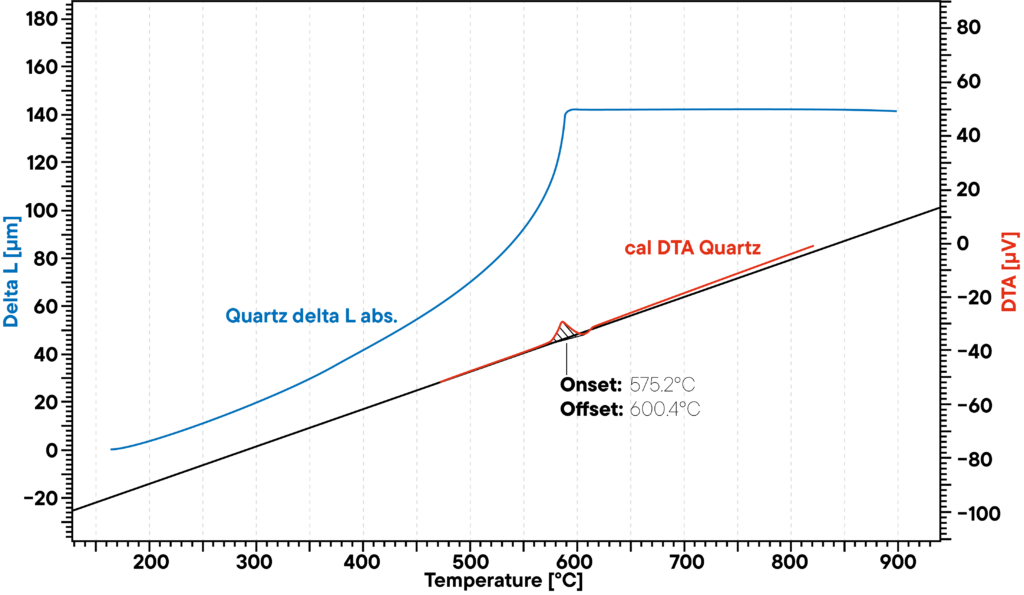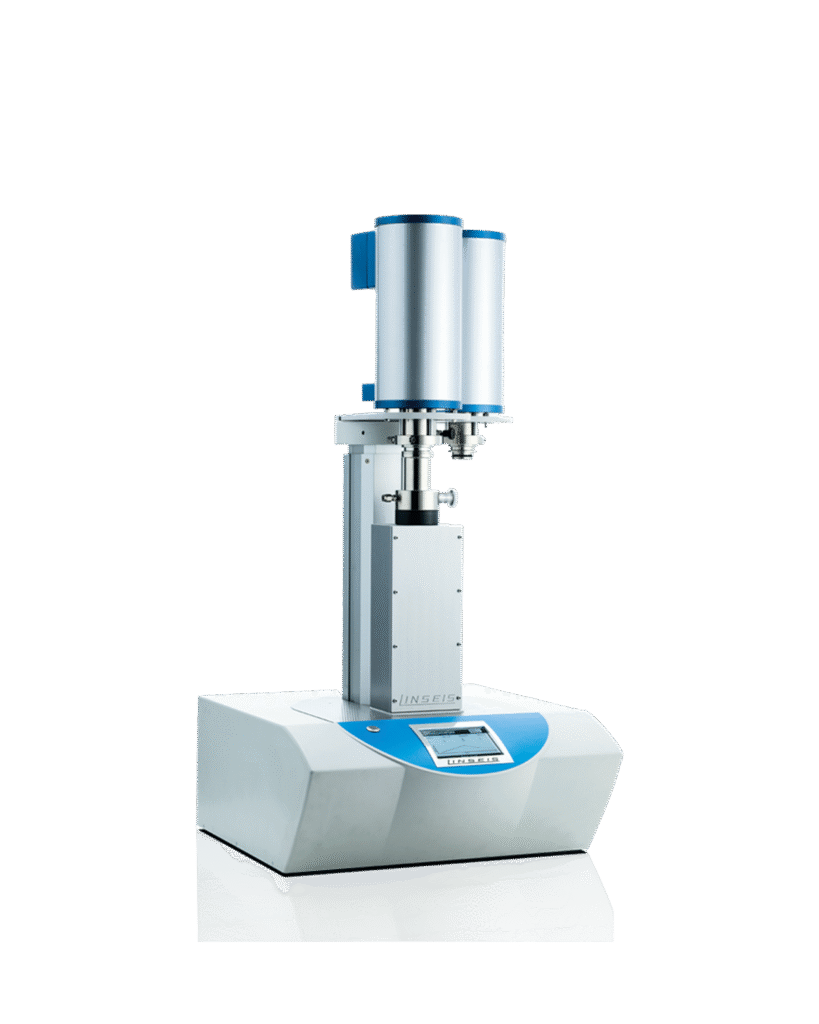The thermal expansion of α-SiO2 can be easily measured by DIL L75 Dilatometer. Single crystal quartz shows a phase transition into so called high quartz at around 550° – 600°C which is well known and can be detected by expansion measurement.
Additionally, the calculated DTA feature of the Linseis DIL L75 Dilatometer series enables an in-depth view of the thermal behavior of the material and easy detection and identification of such phase transitions. The calculated DTA measurement is a mathematical routine based on the sample temperature. Exo- and endothermic effects influence the change of the sample temperature during the dynamic heating or cooling cycle in comparison to the set heating profile.

The phase transition of the measured α-SiO2 takes place at app. 575°C. The blue curve shows the measured absolute delta-L value vs. temperature in µm which is the standard signal a dilatometer shows. The red cal-DTA curve of the measurement is generated by a mathematical evaluation of set temperature and actual sample temperature. It shows a peak that indicates the phase transition like a classic DSC or DTA would show. Applying the DTA feature enables to determine the exact phase transition temperatures in case the expansion curve does not provide a definite onset point.
The deviation of the measured temperature (575.8°C) from the literature value (574°C) can be used for a temperature calibration.
